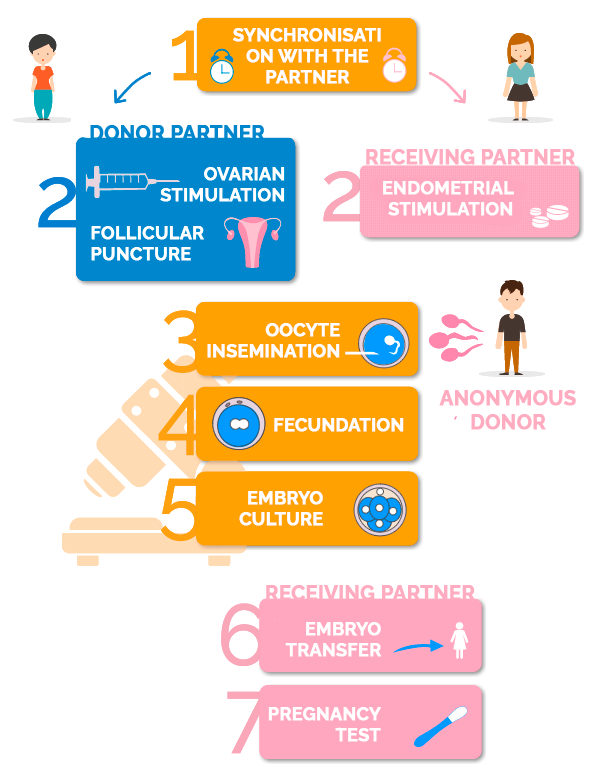ROPA Method: Shared Maternity for female couples

The ROPA method (Reception of Oocytes from the Partner) also known as reciprocal IVF or Shared Motherhood for same sex female couples is an assisted reproduction technique that allows two married women to have a child without having to adopt and to share maternity from the beginning.
One woman in the couple will be the genetic mother and the other woman will be the gestational mother.
What is the ROPA Method?

You have the right to be mothers
Our society has advanced in recent decades: the “classic family” model – man, woman and children – has given way to models of heterosexual, homosexual and single-parent families.
It is becoming increasingly common for women couples who wish to start a family and who can only do so thanks to assisted reproduction techniques to come to our clinics. The entry into force of Law 4/2023, of 28 February, for the real and effective equality of trans people and for the guarantee of the rights of LGTBI people, allows female couples to opt for the ROPA method without the need to be married in order for both to be legally recognised as mothers.
This means that it is no longer necessary for female couples to be married in order to carry out the ROPA method and for both to be legally recognised as mothers. It is sufficient that both women are of legal age, actively participate in the treatment and give their express consent.
The choice of the semen donor can only be made by the medical-biological team that applies the technique, in no case may it be personally selected by the recipient. At VITA we have a team of specialists in charge of carrying out the semen donor selection process. This strict “Donor Screening” process guarantees the greatest phenotypic and immunological similarity of the available samples with the recipient woman.

